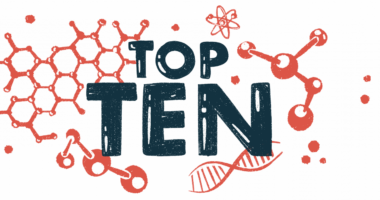FDA Delays Decision on AT-GAA Due to Inability to Inspect China Site
COVID-19 travel restrictions blocked agency's required plant inspection in China

The U.S. Food and Drug Administration (FDA) has delayed a decision on whether to approve cipaglucosidase alfa, the biologic component of AT-GAA — a treatment being developed by Amicus Therapeutics for late-onset Pompe disease.
The agency was unable to inspect a manufacturing site of WuXi Biologics in China in due time because of travel restrictions put in place during the COVID-19 pandemic.
When an inspection is needed but cannot be completed due to travel restrictions, the FDA may defer action on a pending application provided the application otherwise meets the requirements for approval.
No new date scheduled yet for inspection of manufacturing plant
The biologics license application for cipaglucosidase alfa had an action date, or the date when the regulatory decision is expected, of Oct. 29. The action date of the new drug application for miglustat, the other component of AT-GAA, was Aug. 29. Both applications remain under review.
Amicus and the FDA are now working together to come up with a plan to complete the needed inspection. However, no new date has been set yet. The company continues expecting both AT-GAA components to be approved together.
“We are now one step away from the necessary approvals for AT-GAA in the U.S.,” Bradley Campbell, president and CEO at Amicus, said in a press release.
“We continue to believe this is a question of ‘when’ not ‘if’ AT-GAA will be approved and we will continue to work with great urgency to support the FDA’s completion of the final plant inspection necessary for approval so that this important new treatment option is made available for people living with Pompe disease,” Campbell added.
Pompe disease occurs when there is not enough of working alpha-glucosidase (GAA), an enzyme that breaks down glycogen, a large sugar molecule that cells store as a source of energy, into glucose. Without GAA, glycogen cannot be broken down and builds to toxic levels inside cells, particularly muscle cells.
AT-GAA’s cipaglucosidase alfa is a man-made form of the GAA enzyme that is designed to enter muscle cells. The other ingredient, miglustat, is a molecular “chaperone” that helps stabilize this enzyme and make it stay active in the body for longer.
We continue to believe this is a question of ‘when’ not ‘if’ AT-GAA will be approved
The two separate applications are part of a rolling review, whereby the company submits data when available as opposed to waiting to submit the entire document at once.
Previously, the FDA granted breakthrough therapy designation to AT-GAA for late-onset Pompe disease based on the results of a Phase 1/2 clinical trial called ATB200-02 (NCT02675465) where AT-GAA was seen to improve walking ability and lung function for up to three years in adults with the disease.
In the European Union (EU), where a pre-approval inspection is not required, the regulatory review is underway.
“We are also very pleased with the progress of the regulatory review in the EU and look forward to a Committee for Medicinal Products for Human Use (CHMP) opinion by the end of the year,” Campbell said. CHMP is an arm of the European Medicines Agency.
“We remain committed to bringing AT-GAA to as many people living with Pompe disease around the world as quickly as possible,” Campbell added.








